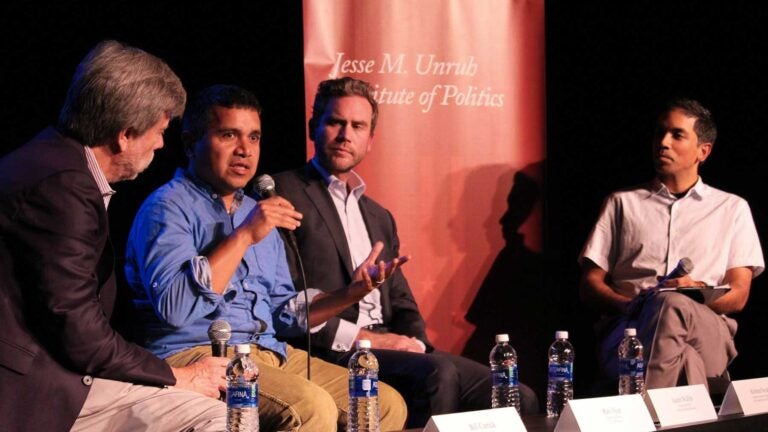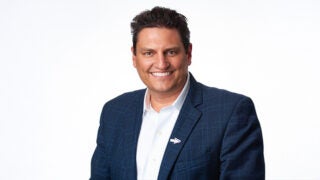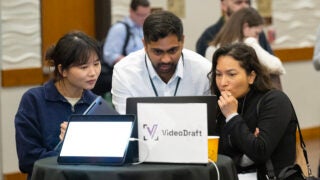
Alumnus Ravi Iyer talks about fake news and tech with Bill Carrick, Justin Wallin and moderator Krishna Nayak, from left. (Photo/Courtesy of Kristy Plaza, Unruh Institute of Politics)
Does technology fuel polarization in the current political climate?
Experts gather at USC to talk fake news, the regulation of social media and more
It’s only been a year since the presidential election, but it seems hard to remember a time when Facebook wasn’t synonymous with fake news spread on social media.
Ravi Iyer ’11 considers fake news a symptom of the country’s polarization rather than the cause.
“People believe what they want to believe and … social media is like gasoline on the fire,” he said.
Iyer and others took part in a recent discussion co-hosted by the USC Dornsife College of Letters, Arts and Sciences with the Jesse M. Unruh Institute of Politics and the USC Viterbi School of Engineering.
Democratic consultant Bill Carrick, one of the event’s panelists, argued that fake news allowed voters in the 2016 election to discount what was going on in mainstream media, no matter how poorly it reflected on their candidate.
“It allowed them to assume it was coming from a biased point of view and therefore to ignore it,” Carrick said. “That’s not been typical of past American campaigns.”
Justin Wallin, CEO and pollster at J. Wallin Opinion Research, noted that a similar situation is occurring in Alabama, where he said supporters of Roy Moore — who has continued to run for the Senate despite facing multiple accusations of sexual assault against minors — are trying to rationalize the situation so they can continue to vote for him. Rather than blaming their candidate, they instead blame the messenger: the mainstream news media that reported the allegations.
To regulate or not to regulate?
Noting the shift in control of news information from media companies with editors and editorial policies to tech companies that may lack this expertise, moderator Krishna Nayak asked whether political ads on social media should be regulated.
Carrick was in favor but noted that online communications are not federally regulated, raising the question of whether companies will be self-policing or whether Congress should step in.
Iyer, the chief data scientist at the crowdsourcing site Ranker.com, said technology moves too fast for the government to meaningfully regulate. However, he’s optimistic that the situation will improve as we realize how unhealthy our information diet is becoming.
Wallin raised the practical difficulties of tracing the source of online ads paid for by a PAC.
“Unravelling how the funds get into that PAC is very difficult, if not impossible,” he said. “The point is that you’re not going to see a Facebook ad or any kind of ad with the disclaimer ‘This ad was purchased by the Russian government.’”
Who do you believe?
Asked whether there will ever again be a media source that is believed by the majority of the population, Carrick said it would be difficult given today’s enormous media fragmentation.
People are not only self-selecting about the news, they’re also self-selecting about where they get their news.
Bill Carrick
“People are not only self-selecting about the news, they’re also self-selecting about where they get their news,” he said. “That’s a big change — people who are so ideologically driven about where they get information from.”
Wallin said today people tune into the news for entertainment rather than reasoned analysis of the issues as they used to do.
“I don’t know if we have an appetite to go back,” he said.
Iyer noted that research shows people are less affected by information than they are by human connection, by emotion, by stories.
“If you want to affect people’s attitudes, what would you want to show them?” he asked. “Probably something a little more emotional or social, rather than more rational.”
Will the current situation improve? While neither Carrick nor Iyer held out much hope for the 2018 midterms, both were optimistic that eventually partisan intensity will diminish.
“The hope is that there are also people who put on conversations like this, who are actually trying to not be so polarized [in order] to make things better,’” Iyer said. “Hopefully, if those efforts succeed, that’s what will solve things, not technology.”



